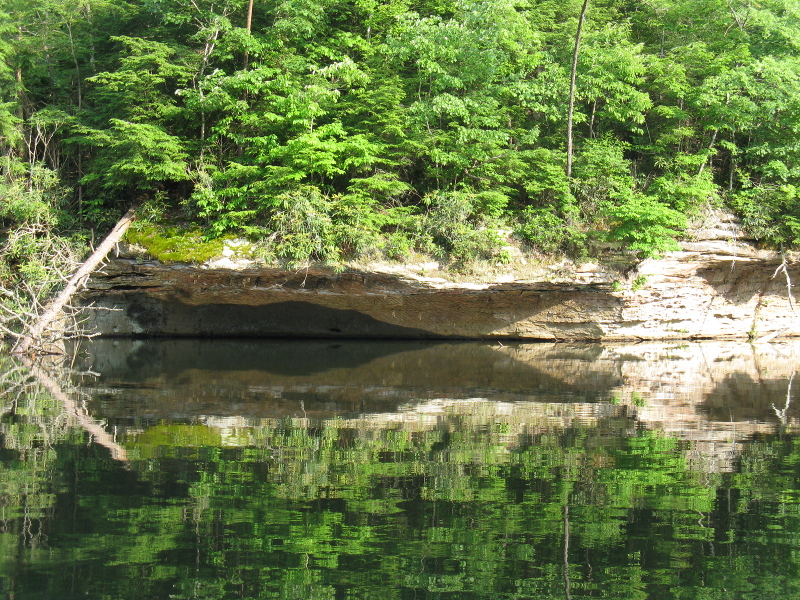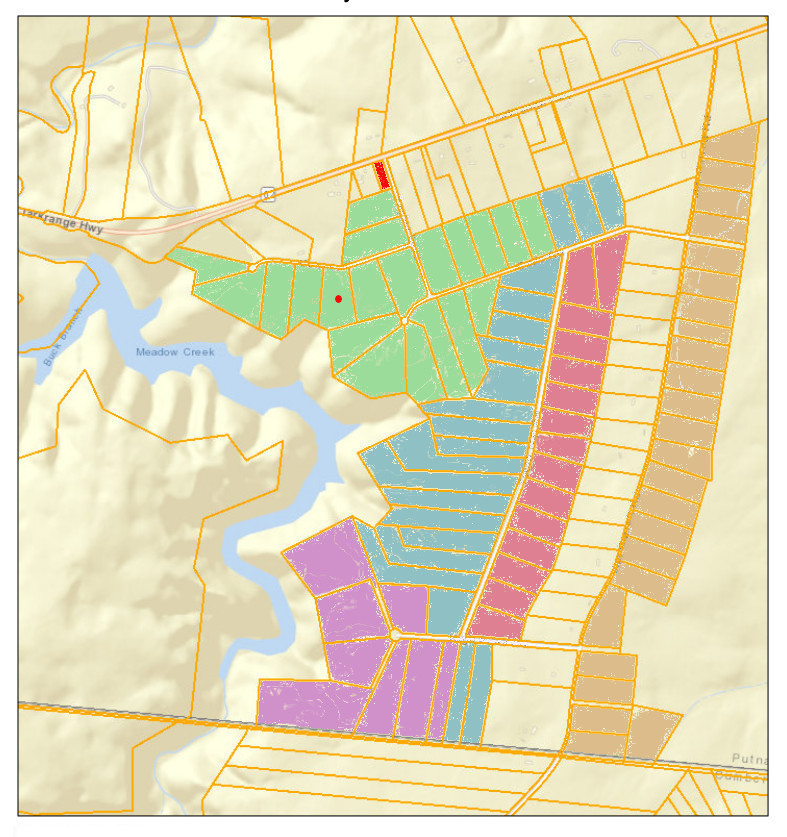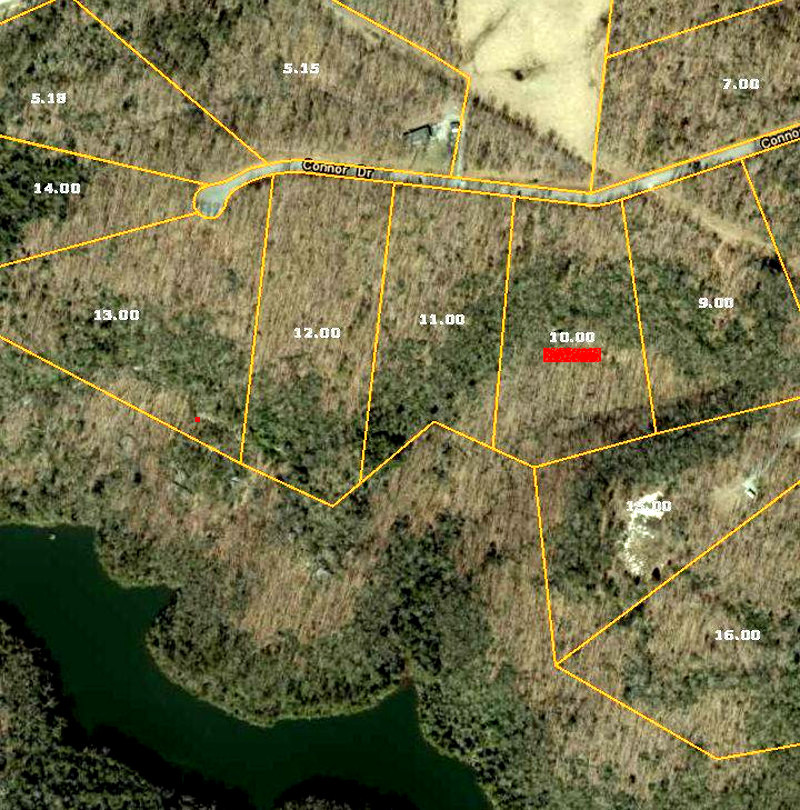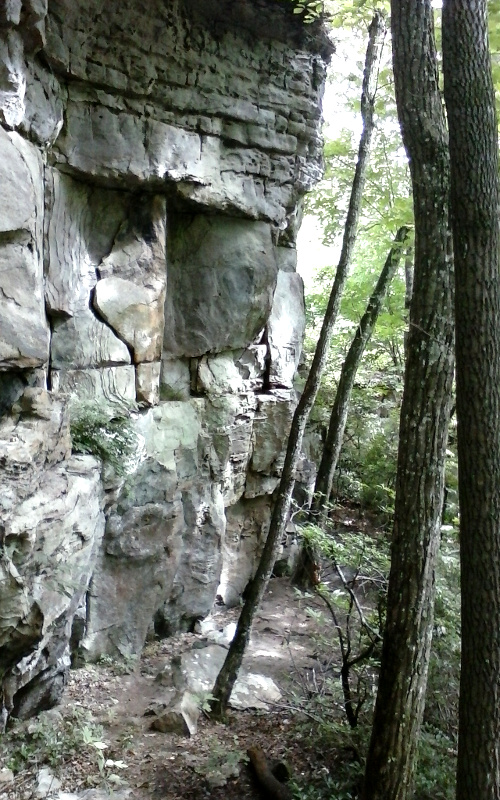Rock Climbing Safety and Liability
Rock climbing is an inherently dangerous sport, which requires training and skill. Policies and procedures are necessary to control this activity in order to minimize risks for park visitors and liability issues for the City. Promoting and allowing this activity without having effective procedures in place is neither reasonable or prudent.
To underscore this point, there was a recent rock climbing accident in the park with very serious injuries. A large team of emergency responders was required to extract the victim from the base of the cliff (see photo) and transport him to the hospital, at considerable cost:
"Climber Falls From Cliffs at Meadow Creek Park"
News Talk 94.1 2019-07-07
"The team leader for the Putnam County Rescue Squad's Mountain Rescue Team said the unidentified man fell approximately 25 feet while 'free climbing' in a remote area. The man received treatment at Vanderbilt Medical Center for multiple fractures and a spinal injury.
About 20 people took part in the three hour operation [with] four agencies involved. 'We did request an aircraft from the highway patrol, but it was going to take over two hours, so we had to move him out by ground', Haynes said."
Where was he from? Which group was he with? Why was he allowed to climb "at Meadow Creek Park" with no safety rope? Where exactly did the accident occur? Was it on park property or private property? How did the climbers get to that location?
UPDATE: An on-site inspection based on rescue scene photos and GPS shows that this "free climbing" accident occurred on private property just outside the park boundary, see map below.
Here's another story about a climbing accident at Bee Rock, before the City of Monterey acquired the property. It was fortunate for the victim that a paramedic "happened to be in the area":
"Woman Falls at Bee Rock" (2015)
Cookeville Herald-Citizen 2015-12-28
"A 54-year-old woman was airlifted to U.T. Medical Center following injuries she sustained after falling from Bee Rock while 'rappelling'. A Putnam County paramedic who happened to be hiking in the area with his family at the time witnessed the fall and was able to assess injuries of the victim before other emergency responders arrived."
The City could be subject to a lawsuit brought by an injured person or the family to cover the costs for medical treatment, rehabilitation, lost work time, etc. If a jury could be convinced that the City was negligent, punitive damages might also be awarded. For example, consider this story about a recent drowning accident at the Cummins Falls Park:
"Parents May Sue Over Cummins Falls Death"
Cookeville Herald-Citizen 2019-07-02
"The parents of a child who died at Cummins Falls State Park in June have sent notice to state organizations that they plan to possibly sue...[for] events that constitute negligence and gross negligence, including keeping the park open despite a call from the National Weather Service and failing to install a warning system. Pierce drowned in June following a flash flooding event in which more than 60 people had to be helped out of the park."
Monterey is a small town with a small budget. If any rock climbing accident results in a major lawsuit, it could have a serious impact. The City might win the case, but at what cost? If the City lost, what effect would it have on insurance coverage? What would happen to all the other park activities if the insurance becomes too expensive?
Over a year ago, a sales pitch was made by rock climbing enthusiasts to convince the City to "establish climbing access to the existing bluff line adjacent to the park property" which would "inspire climbers from all over the southeast to visit Monterey, boosting the economy."
This was accepted at face value. Has anyone done an actual risk/benefit analysis? Does the alleged benefit outweigh the proven risk? Can the risk be effectively managed? Will the rock climbers obey the rules? Will they really "boost the economy"? At what cost?
Do the climbing groups provide insurance to cover their members in case of injury? If not, why not? What about climbers who don't register? Why should a town of 2500 people, most of whom are not rock climbers, take on this risk?
The City was persuaded to "integrate climbing" into the park development plan, but effective rules and procedures to control this activity are still not in place. Unregulated rock climbing cannot be allowed to continue.
According to TCA 70-7-102, a private land owner generally does not have a "duty of care" for people who are injured during outdoor activities such as hunting, etc. However, a park operator does have a "duty of care" and additional responsibility for ensuring the safety of park visitors. In either case, nothing would prevent the possibility of a costly lawsuit which could drag on for months or years.
Adjacent Property
The eastern side of Meadow Creek park is bordered by a residential subdivision, see maps below. The City recently purchased one of the subdivision lots (Connar Dr, lot 10) to create a new park entrance and trail access. Rock climbing promoters said that this would provide "safe and legal access" to the bluffs and "promote economic growth":
"Before, the climbing area wasn't accessible through the park. Now we can bring more climbers in and offer a wide variety of access to different levels of climbing. Using 'our' natural resources to help promote economic growth is great for everybody."
This lot, which was acquired for this purpose, is no longer private land. It is now part of the park property, and the City has the same "duty of care" to regulate park visitor activities to ensure their safety.
Much of the "existing bluff line" is still located on private land beyond the park boundary. If park visitors decide to "access" the adjacent property for reckless activity such as climbing without a safety rope, those land owners also face the risk of being sued, with the cost and stress of defending themselves.
How will the City ensure that park visitors remain on park property? How will the climbing rules be enforced? If they fail to do so and someone gets seriously hurt, some land owner might try to sue the City for promoting a dangerous activity without adequate controls. The City might win the case, but at what cost?
Imagine you live in town with a big oak tree in your backyard. A few local kids like to climb your tree, and you think the risk is acceptable. One day, a new neighbor moves in, builds a new trail leading right up to your backyard, and starts inviting strangers from all over everywhere to climb the trees. Now the risk has greatly increased and you are far more likely to be sued. What would you do?
Other Activities
None of the other activities enjoyed by most of the park visitors such as boating, fishing, swimming, hiking and cycling have nearly the same risk of serious injury as rock climbing. And visitors will be doing those other activities inside the park boundary, with no risk at all to other property owners.
However, all of these activities need to be properly regulated. Even bicycle riding involves a fair amount of risk. Here's a recent story about a "mountain bike" accident at the Cane Creek Park in Cookeville:
"Man Suffers Severe Injuries in Bike Accident"
Cookeville Herald-Citizen, 2019-08-13
"A Cookeville man suffered neck and spinal injuries in a mountain bike crash at Cane Creek Park last week (8-Aug). [He] was bicycling on a mountain bike trail at Cane Creek Park when the injury occurred. He was flown to Vanderbilt University Medical Center from the scene. His daughter said: 'The spinal injury is very serious and he is looking at months of rehabilitation at a specialized facility. There are no guarantees he will regain feeling or the use of his limbs.'"
Was he wearing a helmet? Was he riding normally? Was the trail safely constructed? Did the trail include jumps, steep rocks, or other features to encourage reckless activity? Similar issues must be considered at Meadow Creek Park also.
Here's another recent example of local park visitors failing to follow the safety rules:
"Man injured after falling at Cummins Falls"
Cookeville Herald-Citizen, 2019-08-20
"A man was severely injured Saturday afternoon at Cummins Falls State Park after falling approximately 50 feet from a bluff into a rocky area. He ignored directions from park rangers and jumped over a wooden railing before he fell. Jackson County EMS responded, and the man was airlifted to a level one trauma center.
The gorge area of the park reopened with added safety precautions and additional staff last week for the first time in two months... The TDEC Cummins Falls Website now contains the new safety rules at the park."
At least the State Parks have a ranger on duty to enforce the safety rules. Imagine what it would be like if the park was unsupervised.
UPDATE: On July 16, 2020, a man drowned while kayaking with his son on Meadow Creek Lake. Several days later, the City of Monterey voted to leave the gates to this unsupervised park open 24 hours.
"Man drowns after kayak overturns"
Cookeville Herald-Citizen, 2020-07-17
"An Overton County man died after his kayak overturned on Meadow Creek Lake Thursday afternoon. Derek Lee Wilson, 41, was kayaking with his six-year-old son on the lake when the kayak overturned."
"Monterey board affirms unlimited park hours"
Cookeville Herald-Citizen, 2020-07-22
"The Monterey Board of Mayor and Aldermen voted Monday to provide essentially unlimited access for visitors to Meadow Creek Park.The board voted 7-1 to keep the gates to the park unlocked..."



